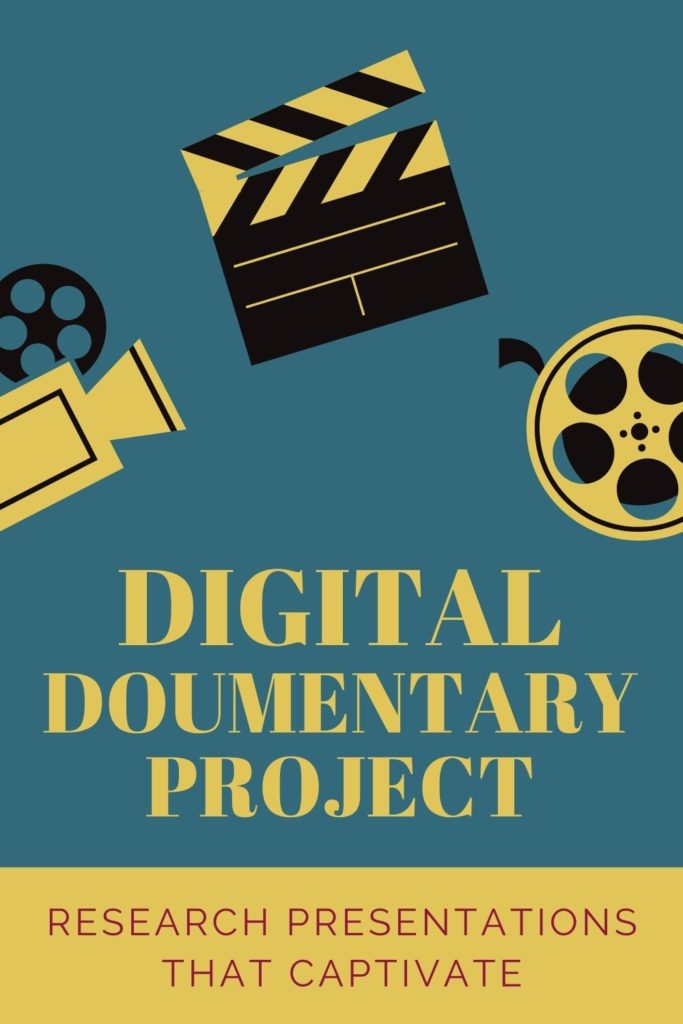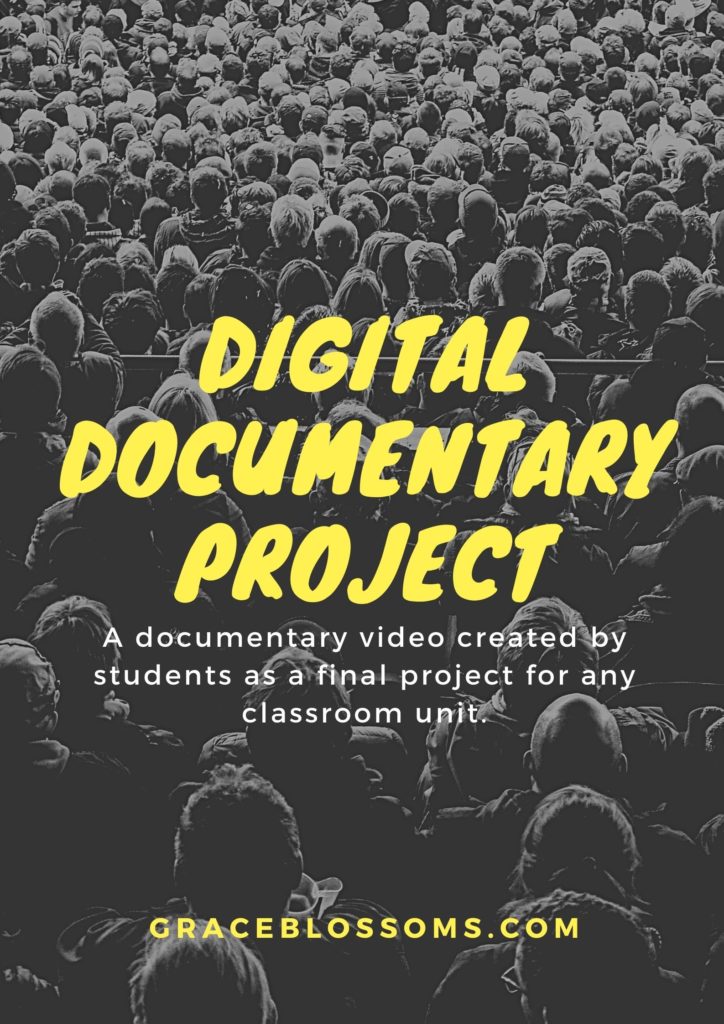
This digital documentary project has been a favorite among students.
Research Done Fun
I know the standard five paragraph essay has its place in life.
But by the 8th grade, my students were about to fall over if they had to write another standard research paper.
Even worse, they’d (and I quote) “rather stick a fork in their eye” if they had to sit through another set of research presentations.
Thus the documentary project was born.
I’m not saying it was a simple process.
I’d never claim it took a short time to create.
But boy, oh boy was it worth it in the end.
Critical Thinking
This project goes beyond the typical research.
Because it wouldn’t be in paper format, they had to envision each piece of information differently.
This time, they’d need to think of what photograph or video they needed to accompany each fact.
On top of that, students would have to decide where it made the most sense within the flow of their documentary.
This took their synthesis of the research and it kicked up a notch.
Tracks Sources During the Research Process
Included in this bundle, you’ll notice the sourcing sheet.
I’ve included this to both track sources as well as keep notes on each piece of information.
I noticed my students would gather all this amazing research then hit a roadblock.
They were frustrated when trying to remember what they’d wanted to do with each piece.
So, we added in a column in the sourcing sheet for them to jot a note about each photograph or fact as they researched.
This page also helped in the creation of their storyboard.
Storyboarding
In order to get a general idea of what information or picture went where, students needed to storyboard. I allowed them to either do this digitally or print it off for a physical storyboard.
They’d present these to their small groups and get feedback on what was lacking, which pieces seemed most interesting, and if it made sense to a general audience.
It was great to do this before putting their documentary together.
Who wants to add all that into a medium and narrate over it just to find out it doesn’t have a great timeline or is missing a huge chunk of information?
Presentations Worth Sitting Through
This is basically asking students to sit through movies.
I mean…who doesn’t wan to do that?
I’ll admit it…not every one of them was a winner.
However, I will say they were a heck of a lot more entertaining than the standard presentation.
I had students even thanking me for this project!
I’d say it was a hit and definitely worth checking out for your next research assignment.
Happy teaching, friends!


